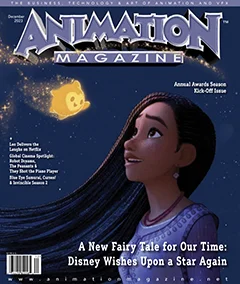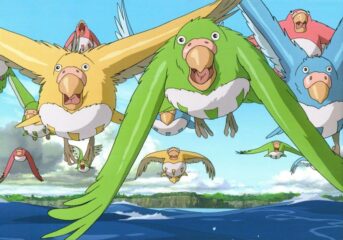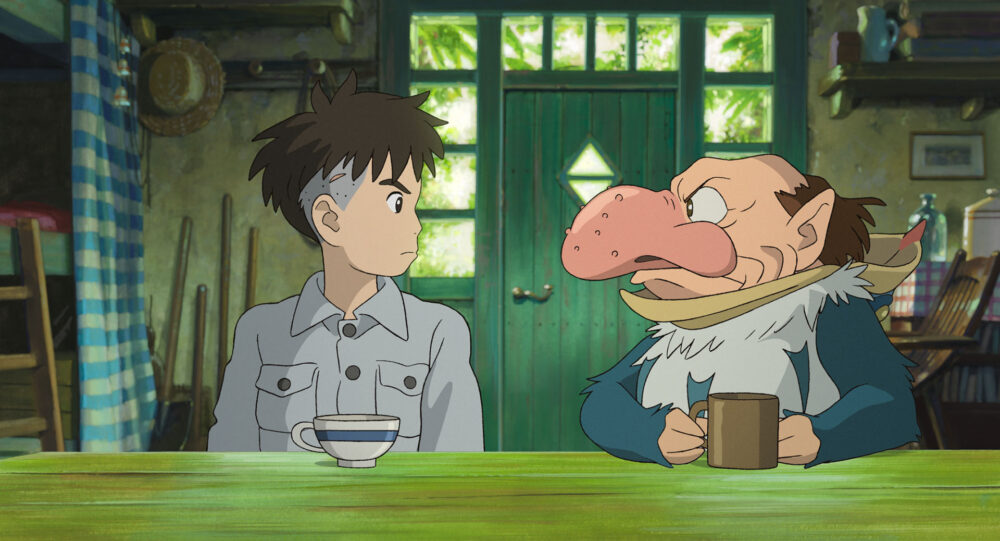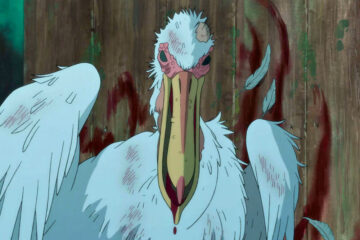|
Getting your Trinity Audio player ready...
|
In his 2016 proposal for the film that became The Boy and the Heron, Hayao Miyazaki wrote, “There’s nothing more pathetic than telling the world you’ll retire because of your age, then making yet another comeback. Is it truly possible to accept how pathetic that is and do it anyway? Doesn’t an elderly person deluding themselves that they’re still capable, despite their geriatric forgetfulness, prove that they’re past their best? You bet it does.”
That’s a bet he loses and the audience wins: The Boy and the Heron shows Miyazaki working with all his powers intact, reminding viewers just how brilliant a filmmaker he is.
‘My own work has been influenced by so many different factors and films: All artists take their place in the continuing cycle of influencing and being influenced. In some ways, the history of art represents a great relay race, with each runner transforming the baton as he carries it.’
— Hayao Miyazaki
In Japan, the film shares the title How Do You Live? (Kimitachi-wa Dō Ikiru-ka?) with a popular 1937 novel by Genzaburo Yoshino (available in English in a lively recent translation), but the stories have virtually nothing in common. Yoshino uses a series of discussions between 15-year-old Jun’ichi and his maternal uncle to explore the connections all humans share, courage, atonement and other moral questions. The Boy and the Heron is a grand fantasy-adventure, reminiscent of Castle in the Sky, Princess Mononoke and Spirited Away.
A Surreal Coming of Age
In 1943, Mahito Maki’s mother Hisato is killed in a fire. His wealthy father, whose company manufactures airplane parts for the military (as Miyazaki’s family did), soon marries his wife’s younger sister Natsuko and moves the family to her estate in the country, far from Tokyo. Mahito has trouble fitting into this arrangement: He’s uncomfortable around his stepmother/aunt who is already pregnant with his half-brother, he gets into fights with the boys at school, and he isn’t used to being watched over by a group of aged maids (referred to as obāsans: grandmothers).
A weird talking heron lures Mahito into a crumbling tower on the estate, which serves as an entrance to an alternate reality where he meets younger versions of his mother and one of the obāsans, and the powerful sorcerer who rules the fantasy realm. Mahito may remind viewers of Pazu in Castle in the Sky: Both young men are curious, courageous and engaging. Like Pazu — and Chihiro in Spirited Away — Mahito is tested. Like them, his bravery, resolve and inner growth enable him to overcome the challenges placed before him.
No filmmaker can match Miyazaki’s skill at building brilliant fantasy worlds. Like dreams, his creations are governed by an inner logic that makes them feel credible, even when they include such flamboyant visuals as a netsuke-like carving that comes to life as a familiar person, a set of geometric blocks that control the balance of the alternate world and a militaristic tribe of giant, carnivorous parakeets. (After seeing the film, viewers may no longer feel quite comfortable around the family budgie.)
In contrast to the nonstop dialogue in so many recent American animated films, Miyazaki understands the power of silence. He tells the story primarily through the visuals, without cynical wisecracks, fart jokes, unnecessary songs or self-conscious homilies. At the end of The Boy and the Heron, the viewer feels a bond with Mahito, not because they’ve been told they do, but because they’ve shared an adventure with him. Together they’ve explored, discovered, learned and reached a satisfying conclusion. The film is exhilarating and a little exhausting: The real world seems a little pallid after seeing it.
The power of the filmmaking also shows that there will be no “next Miyazaki,” just as there has been no “next Winsor McCay” or “next Walt Disney.” “Genius” is an overused term in 21st century culture: It often seems difficult to define, but it’s not hard to recognize.
An impressive group of talented younger auteur directors have come to the fore in Japan in recent years, pushing storytelling in feature animation in exciting new directions: Mamoru Hosoda, Kenji Kamiyama, Makoto Shinkai, Masaaki Yuasa. (Had he lived longer, the brilliant Satoshi Kon would be a member of the group.) The popular press in America has often designated Hosoda and/or Shinkai as Miyazaki’s successor. Both artists are exceptional filmmakers. They’ve clearly learned from the master, but they’re not copying him, nor will they replace him, just as Pete Docter, Brad Bird and Dean DeBlois learned from the great Disney artists, but none of them have replaced Walt.
When I first interviewed him in 1999 for the American release of Princess Mononoke, Miyazaki said, “My own work has been influenced by so many different factors and films: All artists take their place in the continuing cycle of influencing and being influenced. In some ways, the history of art represents a great relay race, with each runner transforming the baton as he carries it. At some point, I’ll be ready to hand the baton on to the next generation — if they wish to receive it.”
A Welcome Return
Miyazaki went on to talk about retiring then, saying his energy level and eyesight weren’t what they used to be. He mentioned the possible conclusion of his career after every subsequent feature. He did retire in 2013, after The Wind Rises. Happily, it didn’t take. Kaku Arakawa’s 2016 documentary Never-Ending Man Hayao Miyazaki showcased the director’s moody impatience when he’s not working, and concludes with him telling his longtime partner and producer, Toshio Suzuki, that he has an idea for the film that will become The Boy and the Heron — and to “work his usual magic” to obtain the funding. The completed film shows he’s not ready to quit the animation relay race: He’s managed to pass on the baton without letting go of it.
Charles Dickens had a stroke while writing The Mystery of Edwin Drood; Michelangelo and Titian continued working at their art until their deaths. Animators can only hope Miyazaki follows their examples and continues making films as long as he lives. May he continue for many years to come.
GKIDS will release Studio Ghibli’s The Boy and the Heron in select theaters on November 22 with a wider release planned for December 8 in both the original Japanese with English subtitles and a new star-studded English-language dub.













 Win a Funko X Lilo & Stitch Prize Pack!
Win a Funko X Lilo & Stitch Prize Pack! 
